Following in our line of member interviews, we recently caught up with Pauline Bloomfield, who as a textile artist describes her work in a wonderful way;
“I would class my work as narrative, an illustrative/storytelling form of textile art”.
Pauline has a wealth of experience and her work is owned by private collectors in England, France and America, so when it came to asking her her thoughts about the industry as well as the advice she would give to others when first starting out, it really got us thinking.
You can find out more about Pauline and her work on Fashion Rider: Pauline Bloomfield

A bit about you:
How did you train as a textile artist and what was your experience?
After completing a foundation course, I studied Graphic design at Leeds Beckett University, specialising in book illustration. I then went on to study for an MA in textiles at Manchester Metropolitan University, specialising in print and embroidery.
During my final year on the Graphic Design course, I spent a lot of my time studying fabrics and attending tutorials in the Department of Textile Industries at the neighbouring University of Leeds. This was a really good experience and the tutorials with Dr Michael Hann gave me the confidence to combine my interest in illustration and fabric into what I then called “narrative textiles”.
What do you wish someone had told you when you started?
During my final term at Manchester, one of my tutors gave me a very valuable piece of advice. With regard to my search for work, Professor Anne Morrell advised me to “take absolutely anything” because it was the only way I would find out what I did and did not like.
She was certainly right and my work takes me around the country. I’ve found what I do like, which for me has been, giving lectures on embroidery, running day schools, summer schools, exhibiting and selling my work. On one occasion I exhibited work in Milan.
The only thing that I dislike is the occasional bout of sheer exhaustion.
How will you know when you are “successful”?
That depends on what one would view as “success”. To me, a like, follow or a retweet on Twitter is as much of a success as a round of applause following a lecture on my work.
Tell us about your business:
What work are you most proud of?
Over the past twenty years I have done a lot of therapeutic art with vulnerable adults and I am very proud of that. I have also sold work to private collectors and this has given me a greater awareness of the aesthetic value of crafts. Having the experience of selling work through venues such as art galleries and leading therapeutic art sessions in day centres and care settings has given me the best of both worlds.
What recent achievement has put a smile on your face?
Following on from the previous question, I would say that my most pleasing achievement was gaining my diploma in Person-Centred Art Therapy Skills. This is something I have wanted to do for many years and I can fully appreciate how art can be used for healing.
What is the single biggest obstacle for your business success?
When I graduated many years ago, one of the biggest challenges was networking. This was a fairly slow process before internet access became the norm. Now the world is much better connected because of the worldwide web, it is easier to buy from specialist suppliers which enables me to work efficiently. I find it easier to connect with other creative individuals by having my own website as well as features on other sites. It is almost like having a virtual shop window. Twitter has not only enabled me to form a greater network, it has also worked as a market research tool as my work is now of interest to professionals in the interior design industry.

What’s your insight on the industry today:
What is the most exciting thing happening in fashion right now?
In my opinion, the most exciting thing happening within fashion at the moment is the upcycling of fabrics. We all know that this has been a common practice around the world by generations (see Japanese Boros and Indian Kanthas) but with the need to take care of our planet and reduce pollution, this has an even greater meaning. I have recently become aware of the work of the New York based fashion designer Daniel Silverstein who has saved tonnes of scrap fabrics from being placed in landfill sites and created unique garments. It makes me think of my interest in patchwork, a subject I taught in adult community education.
Daniel Silverstein
Daniel Silverstein on Facebook
As a textile artist I regularly recycle fabrics, rarely throwing anything away and as well as using commercial dyes to add colour to fabric, I also use vegetable dyes such as annatto, turmeric and henna.
What are the best and worst things about the fashion industry?
I consider the fashion industry to be fast-paced, always changing, trends come, go and sometimes come back in fashion, and some designs are timeless.
Becoming more environmentally aware, especially with the use of fabrics is probably one of the best things about fashion; long may this continue. I am under the impression that the fashion world is a competitive place to be but I believe there is room for everyone.
What are your favourite trends of 2017?
I have always admired Lagenlook, the use of layered natural fabrics. My favourite trends of 2017 are the bold uses of floral designs, boho and the wearing of the duvet which will come in useful, especially with the changing seasons.
The Best autumn winter 2017 fashion trends?
Pauline has certainly provided us with some food for thought! I agree with Pauline that the only way to find out what you truly love and want to do is by trying everything. Gaining a wide range of experience and learning as we go, teaches us what we like and what we don’t. It’s then the, what we like, which we use to build on and develop into our own.
I also love the plug about the Worldwide Web, something which we’re all guilty of taking for granted. But also something which we must remember to take advantage of and grab every opportunity that it can offer (and of course that is suitable for our business).
A Collaborative Partnership
If you would like to find out more about Pauline’s work or you would like to work with or hire Pauline, you can contact her direct by clicking here: Pauline Bloomfield
And if you would like to take part in our quick fire questions and share with us your advice and highlights then please get in touch and let us know!



